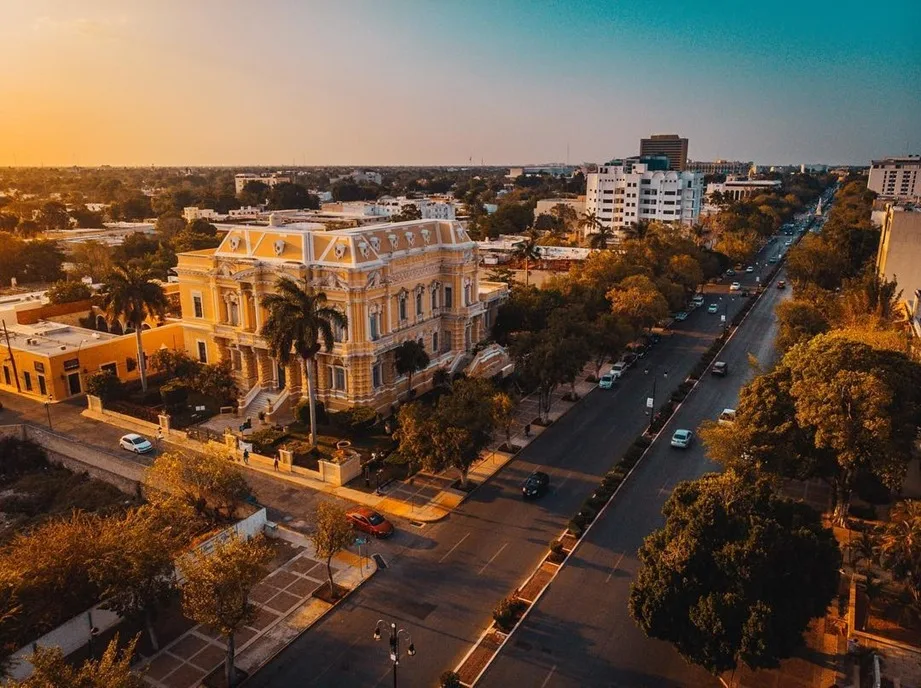Mérida, Yucatán — The Paseo de Montejo, conceived in the late 19th century during the peak of the henequen boom, has established itself as one of the most emblematic cultural corridors of Mérida. Inspired by French boulevards and named after Francisco de Montejo, the conqueror of Yucatán, the promenade began to be laid out between 1888 and 1905 and has since been expanded in several stages, including the creation of the Prolongación Montejo in 1979.
The avenue is an architectural display of the wealth from the henequen era: French-style houses, Neoclassical palaces, and European-style mansions that belonged to the wealthiest families of the period. Among its iconic buildings stand out the Palacio Cantón, now the Regional Museum of Anthropology, the Quinta Montes Molina, the Casas Cámara or “Twin Houses,” as well as historic residences like the Casa Peón del Minarete and the Casa Peón de Regil.
The corridor also houses monuments of great symbolic value, including the Monument to the Homeland, a monumental work by Colombian sculptor Rómulo Rozo. Other roundabouts pay tribute to figures such as Justo Sierra and Felipe Carrillo Puerto, while various sections of the boulevard often host temporary sculpture exhibitions that complement the artistic atmosphere of the place.
Today, the Paseo de Montejo is a vital point of Merida’s cultural life. Every Sunday it becomes a pedestrian and cyclist space during the traditional “biciruta,” and the city council offers guided tours to learn about its history and architecture. Cafés, galleries, restaurants, and boutique hotels installed in old mansions add a contemporary touch without breaking with its heritage essence.
More than an avenue, Paseo de Montejo is a symbol: it brings together the splendor of the henequen past, the cultural dynamics of the present, and the living identity of Mérida as a city that dialogues with its history without ceasing to transform itself.
Discover more from Riviera Maya News & Events
Subscribe to get the latest posts sent to your email.
